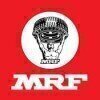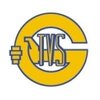Filter interviews by
Yazaki CAD Design Engineer Interview Questions and Answers
Yazaki CAD Design Engineer Interview Experiences
1 interview found
I applied via Referral and was interviewed in Jun 2024. There were 2 interview rounds.
(1 Question)
- Q1. What is surface continuity?
- Ans.
Surface continuity refers to the smooth transition between adjacent surfaces in a CAD model.
Surface continuity ensures that there are no gaps or overlaps between surfaces.
There are different levels of surface continuity, such as G0, G1, G2, and G3, which represent the degree of smoothness in the transition.
Achieving surface continuity is important for creating aesthetically pleasing and manufacturable designs.
Examples ...
(1 Question)
- Q1. How do you manage pressure?
Interview Preparation Tips
Top trending discussions






Interview questions from similar companies

Assistant Engineer Interview Questions & Answers
Samvardhana Motherson Groupposted on 1 Aug 2021
I applied via Campus Placement and was interviewed in Oct 2020. There were 4 interview rounds.
Interview Questionnaire
2 Questions
- Q1. What are you doing
- Q2. What you earn your life
- Ans.
I earn my life by working as an Assistant Engineer.
I earn my life by working in the field of engineering.
I am employed as an Assistant Engineer and receive a salary for my work.
My earnings come from the projects I work on and the services I provide as an Assistant Engineer.
Interview Preparation Tips

Assistant Engineer Interview Questions & Answers
Samvardhana Motherson Groupposted on 27 May 2022
I applied via Campus Placement and was interviewed before May 2021. There was 1 interview round.
(2 Questions)
- Q1. How the working culture of mssl
- Ans.
The working culture at MSSL is collaborative, innovative, and focused on continuous improvement.
MSSL encourages teamwork and open communication among employees.
The company values creativity and encourages employees to think outside the box.
Continuous learning and development opportunities are provided to employees.
MSSL has a strong focus on quality and customer satisfaction.
The company promotes a healthy work-life bala
- Q2. Mssl working experience is good.. all are systematic work.. good communication. Team work..
Interview Preparation Tips

Assistant Engineer Interview Questions & Answers
Samvardhana Motherson Groupposted on 26 Nov 2017
Interview Questionnaire
2 Questions
- Q1. What is the use of combination set?
- Ans.
A combination set is a tool used for measuring and marking angles, distances, and depths accurately.
Combination sets are commonly used in engineering and construction.
They typically include a protractor, ruler, and depth gauge.
The protractor is used to measure and mark angles.
The ruler is used to measure and mark distances.
The depth gauge is used to measure and mark depths.
Combination sets are versatile and can be used...
- Q2. How many types of CNC controls units?
- Ans.
There are several types of CNC control units used in engineering.
There are three main types of CNC control units: open-loop, closed-loop, and computer numerical control (CNC).
Open-loop control units are the simplest and least expensive, but they do not provide feedback on the actual position of the machine.
Closed-loop control units use feedback sensors to continuously monitor and adjust the position of the machine, res...
Interview Preparation Tips
Experience: I have answered all the questions sucessfully....
Tips: confidentely

(1 Question)
- Q1. How you manage stressful situations
- Ans.
I manage stressful situations by staying organized, prioritizing tasks, taking breaks, and seeking support from colleagues.
Stay organized by creating to-do lists and setting realistic goals
Prioritize tasks based on deadlines and importance
Take short breaks to clear my mind and refocus
Seek support from colleagues or supervisors when feeling overwhelmed
(1 Question)
- Q1. How buck converter works
- Ans.
A buck converter is a type of DC-DC converter that steps down voltage while increasing current.
Converts higher voltage to lower voltage
Uses inductor and capacitor to store and release energy
Efficient for battery-powered devices
Example: Charging a smartphone from a higher voltage source

I applied via Referral and was interviewed in Sep 2021. There was 1 interview round.
Interview Questionnaire
1 Question
- Q1. What is your company
Interview Preparation Tips

I applied via Walk-in and was interviewed before Jan 2024. There was 1 interview round.
(2 Questions)
- Q1. What are the differences between series and parallel circuits?
- Ans.
Series circuits have one path for current flow, while parallel circuits have multiple paths.
Series circuits have the same current flowing through all components.
Parallel circuits have different currents flowing through each branch.
In series circuits, if one component fails, the entire circuit fails.
In parallel circuits, if one component fails, the other branches can still function.
Examples: Christmas lights are often c...
- Q2. What is inverter
- Ans.
An inverter is a device that converts direct current (DC) to alternating current (AC) for use in electrical systems.
Converts DC to AC power
Used in solar power systems to convert DC power from solar panels to AC power for use in homes
Commonly used in uninterruptible power supplies (UPS) to provide backup power during outages

I applied via Campus Placement and was interviewed in Dec 2022. There were 3 interview rounds.

1 year experience certificate
(5 Questions)
- Q1. 1year experience certificate
- Q2. Injector nozzle cheking hardness
- Q3. Modling in injector
- Ans.
Modling in injector is a process used in manufacturing to create complex shapes by injecting molten material into a mold.
Modling in injector is commonly used in industries such as automotive, aerospace, and consumer goods.
The process involves heating the material until it becomes molten and then injecting it into a mold cavity.
The material solidifies inside the mold, taking the shape of the cavity.
Examples of materials...
- Q4. 5S in one week
- Q5. Machine opration in cutting in nozzle body horizontal and vertical side
- Ans.
Machine operation in cutting in nozzle body horizontal and vertical side.
The machine should be set up to cut the nozzle body horizontally and vertically.
The cutting process should be precise and accurate to ensure proper functionality of the nozzle.
Proper safety measures should be followed during the operation.
Regular maintenance and calibration of the machine is necessary to maintain cutting quality.
Examples of machin...
Interview Preparation Tips

I applied via Naukri.com and was interviewed in Dec 2020. There were 3 interview rounds.
Interview Questionnaire
1 Question
- Q1. Core Java, J2EE
Interview Preparation Tips

I applied via Walk-in and was interviewed before Feb 2021. There were 2 interview rounds.

(2 Questions)
- Q1. Depends on experience
- Q2. Related to systematic approach
- Ans. Problem solving tools, OEE, FPY, Root cause analysis. 14Q, 5S
Interview Preparation Tips
Yazaki Interview FAQs
Tell us how to improve this page.
Yazaki Interviews By Designations
- Yazaki Quality Engineer Interview Questions
- Yazaki Diploma Trainee Engineer Interview Questions
- Yazaki Production Engineer Interview Questions
- Yazaki Junior Engineer Interview Questions
- Yazaki Assistant Manager Interview Questions
- Yazaki Maintenance Engineer Interview Questions
- Yazaki Operator Interview Questions
- Yazaki Machine Operator Interview Questions
- Show more
Interview Questions for Popular Designations
- Design Engineer Interview Questions
- Auto CAD Designer Interview Questions
- Mechanical Engg. Design Interview Questions
- Senior Design Engineer Interview Questions
- Cadd Designer Interview Questions
- Electrical Design Engineer Interview Questions
- Structural Design Engineer Interview Questions
- Piping Designer Interview Questions
- Show more
Yazaki CAD Design Engineer Interview Process
based on 1 interview
Interview experience
Interview Questions from Similar Companies
Fast track your campus placements
|
Junior Engineer
518
salaries
| ₹1.5 L/yr - ₹5.4 L/yr |
|
Assistant Manager
392
salaries
| ₹4.3 L/yr - ₹13.8 L/yr |
|
Engineer
311
salaries
| ₹1.9 L/yr - ₹7.4 L/yr |
|
Production Engineer
297
salaries
| ₹1.2 L/yr - ₹7 L/yr |
|
Senior Engineer
296
salaries
| ₹3.8 L/yr - ₹10 L/yr |

Bosch

Samvardhana Motherson Group

MRF Tyres

Ceat Tyres
- Home >
- Interviews >
- Yazaki Interview Questions >
- Yazaki CAD Design Engineer Interview Questions











